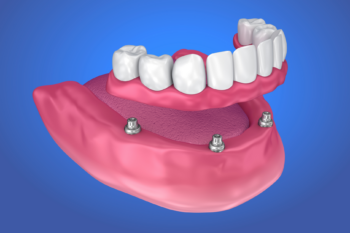
Losing teeth can be a difficult and often painful experience.
Not only can it affect your ability to eat and speak, but it can also impact your confidence and self-esteem.
Fortunately, many options are available to restore your smile and help you regain your confidence.
This article will explore the various options for missing teeth, including dental implants, dentures, bridges, and more.
Understanding the importance of replacing missing teeth
Before we delve into the various options available for missing teeth, it’s important to understand why replacing them is crucial.
Aside from aesthetic reasons, missing teeth can lead to a host of other issues, such as:
- Difficulty eating and speaking
- Shifting of remaining teeth
- Changes in facial structure
- Bone loss in the jaw
- Increased risk of gum disease
You can avoid these issues by replacing missing teeth and improving your oral health.
Dental implants: a permanent solution
Dental implants are a popular and permanent solution for missing teeth.
A dental implant is a metal post surgically implanted into the jawbone, serving as a root for a replacement tooth.
The replacement tooth is then attached to the implant, creating a natural-looking and functional tooth.
The benefits of dental implants
Permanent solution. Dental implants are designed to last a lifetime with proper care.
Natural-looking. The replacement tooth is custom-made to match your natural teeth.
Improved oral health. Dental implants prevent bone loss in the jaw and reduce the risk of gum disease.
Improved speech and eating. Dental implants function like natural teeth, allowing you to eat and speak without difficulty.
The dental implant process
The dental implant process typically involves several steps:
Consultation. Your dentist will evaluate your oral health and determine if you are a candidate for dental implants.
Implant placement. The metal post is surgically implanted into the jawbone.
Healing period. It takes several months for the implant to fuse with the jawbone in a process called osseointegration.
Abutment placement. Once the implant has fused with the jawbone, an abutment is attached to the implant.
Crown placement. The replacement tooth is attached to the abutment, completing the implant process.
Dentures: a removable solution
Dentures are a common solution for missing teeth, particularly for those missing several or all.
Dentures consist of a gum-colored base that supports a set of replacement teeth.
They can be removed for cleaning and maintenance.
The benefits of dentures
Cost-effective. Dentures are typically more affordable than dental implants.
Non-invasive. The denture process does not involve surgery or other invasive procedures.
Versatile. Dentures can be used to replace several teeth or all of your teeth.
The denture process
The denture process typically involves several steps:
Consultation. Your dentist will evaluate your oral health and determine if you are a candidate for dentures.
Impressions. An impression of your teeth and gums will be taken to create a custom-fit denture.
Fitting. Once the denture is created, it will be fitted to ensure a comfortable fit.
Adjustment. Your dentist may need to adjust the denture to ensure a proper fit.
Maintenance. Dentures require regular cleaning and maintenance to ensure longevity.
Bridges: a fixed solution
A dental bridge is a fixed solution for missing teeth that involves attaching a replacement tooth to adjacent teeth.
The adjacent teeth serve as anchors for the replacement tooth, creating a natural-looking and functional tooth.
The benefits of bridges
Fixed solution. Bridges are a permanent solution that does not require removal for cleaning or maintenance.
Cost-effective. Bridges are typically less expensive than dental implants.
Quick process. The bridge process typically only takes a few weeks to complete.
The bridge process
The bridge process typically involves several steps:
Consultation. Your dentist will evaluate your oral health and determine if you qualify for a dental bridge.
Preparation. The adjacent teeth will be prepared for the bridge by removing a portion of the enamel.
Impressions. An impression of your teeth and gums will be taken to create a custom-fit bridge.
Temporary bridge. A temporary bridge will be placed while the permanent bridge is being created.
Placement. Once the permanent bridge is ready, it will be attached to the adjacent teeth, completing the process.
Partial dentures: a removable solution for some missing teeth
Partial dentures are a removable solution for those missing some but not all teeth.
They consist of replacement teeth attached to a gum-colored base supported by a metal frame.
The benefits of partial dentures
Non-invasive. The partial denture process does not involve surgery or other invasive procedures.
Cost-effective. Partial dentures are typically less expensive than dental implants or bridges.
Versatile. Partial dentures can be used to replace several missing teeth.
The partial denture process
The partial denture process typically involves several steps:
Consultation. Your dentist will evaluate your oral health and determine whether you qualify for partial dentures.
Impressions. An impression of your teeth and gums will be taken to create a custom-fit partial denture.
Fitting. Once the partial denture is created, it will be fitted to ensure a comfortable fit.
Adjustment. Your dentist may need to adjust the partial denture to ensure a proper fit.
Maintenance. Partial dentures require regular cleaning and maintenance to ensure longevity.
Other options for missing teeth
In addition to dental implants, dentures, bridges, and partial dentures, other options are available for missing teeth.
These include:
Flipper
A removable partial denture that is typically used as a temporary solution.
Maryland bridge
A less invasive type of bridge that does not require the preparation of adjacent teeth.
Resin-bonded bridge
A type of bridge that is attached to adjacent teeth using a metal or porcelain framework.
Conclusion
Missing teeth can be a difficult and often painful experience, but fortunately, many options are available to restore your smile and improve your oral health.
There are solutions for every situation and budget, from dental implants to dentures to bridges and partial dentures.
If you are experiencing missing teeth, consult your dentist to determine the best option for you.
FAQs
Is it necessary to replace missing teeth?
Yes, it is important to replace missing teeth to avoid a host of issues such as bone loss, shifting of remaining teeth, and changes in facial structure.
How do dental implants compare to other solutions for missing teeth?
Dental implants are a permanent solution designed to last a lifetime, offering a natural-looking and functional replacement tooth.
How long does the dental implant process take?
The dental implant process typically takes several months, as it involves a healing period during which the implant fuses with the jawbone.
How much do dentures cost?
The cost of dentures varies depending on the type of denture and the materials used, but they are typically less expensive than dental implants.
How do I care for my dentures?
Dentures require regular cleaning and maintenance, including daily brushing and soaking in a denture-cleaning solution.
It is important to handle dentures carefully to avoid damage and to have them checked by your dentist regularly.
Ready to restore your smile? Contact us to schedule a consultation with our experienced dental team.
- Call us at 904-273-4373
- Email us at xrays@jaxdentalhealth.com
Darryl A. Field, DDS, is situated in Jacksonville Beach, FL, and welcomes patients from the surrounding areas.
